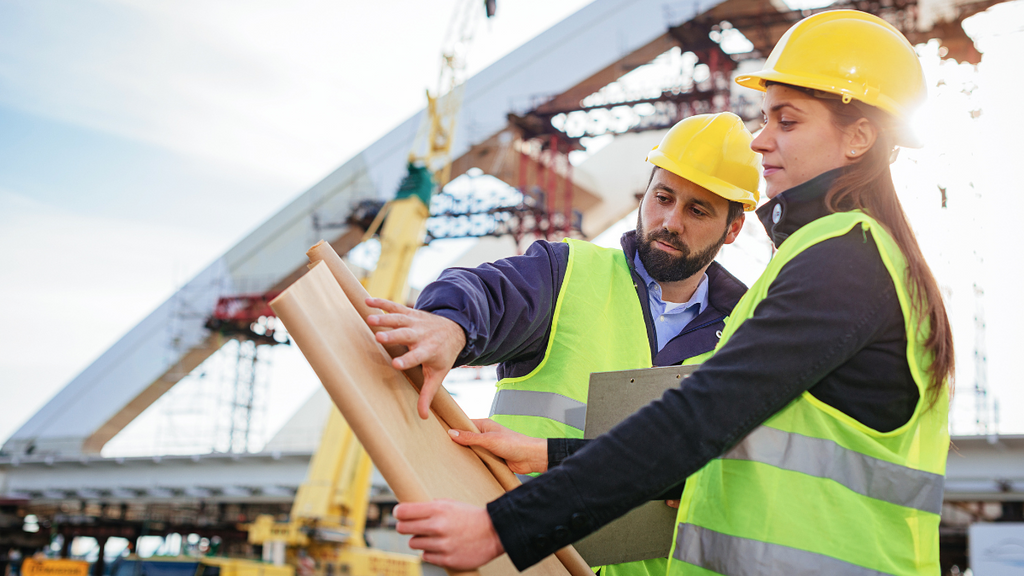The 15-Second Trick For Geotheta
The 15-Second Trick For Geotheta
Blog Article
The Buzz on Geotheta
Table of ContentsThe 5-Minute Rule for GeothetaThe Buzz on GeothetaA Biased View of GeothetaThe Facts About Geotheta UncoveredIndicators on Geotheta You Should Know

They carry out site investigations, collect samples, do laboratory tests, and analyze data to assess the viability of the ground for building and construction tasks - Geo Tech Engineer. Based upon their searchings for, geotechnical designers give recommendations for structure design, slope security, keeping structures, and reduction of geotechnical hazards. They collaborate with various other professionals, such as architects, structural designers, and building teams, to ensure that geotechnical considerations are incorporated right into the total task layout and implementation
By analyzing the behavior and properties of soil and rock, they can recognize prospective geotechnical threats such as landslides, soil settlement, or incline instability. Their proficiency assists protect against failings or mishaps that might jeopardize lives and home. Here are some comprehensive duties and duties of a geotechnical designer: Site Investigation: Geotechnical designers conduct website investigations to collect data on subsurface conditions.
They interpret the information to understand the residential properties and behavior of the dirt and rock, including their toughness, leaks in the structure, compaction qualities, and groundwater problems. Geotechnical Evaluation and Style: Geotechnical designers assess the data gathered throughout website examinations to examine the stability and viability of the website for building and construction projects. They perform geotechnical estimations and modeling to examine aspects such as birthing capability, settlement, slope stability, side earth stress, and groundwater flow.
The Ultimate Guide To Geotheta
Foundation Design: Geotechnical engineers play a critical role in designing structures that can safely support the designated framework. They analyze the dirt conditions and load needs to figure out the suitable structure type, such as superficial foundations (e.g., grounds), deep foundations (e.g (https://es.quora.com/profile/Ian-Hammond)., piles), or specialized techniques like dirt improvement. They think about elements such as settlement limitations, bearing capability, and soil-structure interaction to develop optimum foundation designs
They evaluate construction strategies, screen website activities, and carry out area inspections to verify that the layout referrals are followed. If unforeseen geotechnical problems occur, they analyze the circumstance and offer suggestions for remediation or changes to the style. Danger Assessment and Reduction: Geotechnical designers evaluate geotechnical risks and risks related to the task site, such as landslides, liquefaction, or soil disintegration.

Collaboration and Communication: Geotechnical designers function closely with other professionals associated with a job, such as architects, architectural designers, and construction teams. Reliable interaction and collaboration are necessary to incorporate geotechnical factors to consider into the overall project style and building process. Geotechnical engineers give technological knowledge, answer queries, and make certain that geotechnical requirements are satisfied.
Get This Report on Geotheta
Below are some kinds of geotechnical designers: Structure Designer: Foundation designers specialize in designing and evaluating structures for structures. They evaluate the dirt problems, load needs, and website features to figure out the most appropriate structure type and layout, such as shallow foundations, deep foundations, or specialized methods like pile structures.
They review the factors influencing incline security, such as dirt buildings, groundwater conditions, and slope geometry, and establish techniques to stop slope failings and reduce risks. Quake Engineer: Earthquake designers concentrate on analyzing and designing structures to endure seismic forces. They assess the seismic hazard of a site, evaluate soil liquefaction capacity, and create seismic design criteria to ensure the safety and security and durability of frameworks throughout earthquakes.
They carry out area screening, accumulate samples, and assess the gathered data to identify the dirt residential or commercial properties, geologic formations, and groundwater conditions at a site. Geotechnical Instrumentation Designer: Geotechnical instrumentation designers concentrate on monitoring and gauging the behavior of dirt, rock, and frameworks. They set up and preserve instrumentation systems that keep an eye on aspects such as soil settlement, groundwater levels, slope movements, and architectural displacements to examine efficiency and supply early cautions of potential issues.
5 Easy Facts About Geotheta Described
They carry out tests such as triaxial tests, combination tests, direct shear tests, and permeability examinations to collect you could try these out information for geotechnical analysis and style. Geosynthetics Designer: Geosynthetics engineers focus on the style and application of geosynthetic materials, such as geotextiles, geogrids, and geomembranes. They use these materials to enhance dirt security, reinforce inclines, give drainage remedies, and control erosion.
They have a tendency to be investigatory individuals, which means they're intellectual, introspective, and analytical. They are curious, methodical, reasonable, logical, and rational. Several of them are additionally social, meaning they're kind, charitable, participating, person, caring, handy, empathetic, tactful, and friendly. Does this seem like you? Take our totally free job test to learn if geotechnical engineer is among your top career suits.
In the workplace setting, geotechnical designers make use of specialized software application tools to perform calculations, produce styles, and analyze information. They prepare reports, evaluation project requirements, connect with customers and staff member, and coordinate task tasks. The office setup provides a helpful environment for research, analysis, and cooperation with other specialists associated with the job.
Geotheta Fundamentals Explained
They regularly see task sites to carry out site examinations, analyze geotechnical conditions, and gather data for analysis. These check outs involve traveling to different places, sometimes in remote or challenging surfaces. Geotechnical engineers might do dirt tasting, conduct examinations, and display building activities to make certain that the geotechnical aspects of the job are being applied appropriately.
Geotechnical engineers additionally operate in specialized geotechnical labs. In these facilities, they carry out experiments, execute examinations on dirt and rock samples, and examine the engineering properties of the materials. Geotechnical research laboratory engineers work extensively in these settings, taking care of screening tools, operating instruments, and recording data. They work together with various other laboratory team to make sure exact and reliable testing outcomes.
Report this page